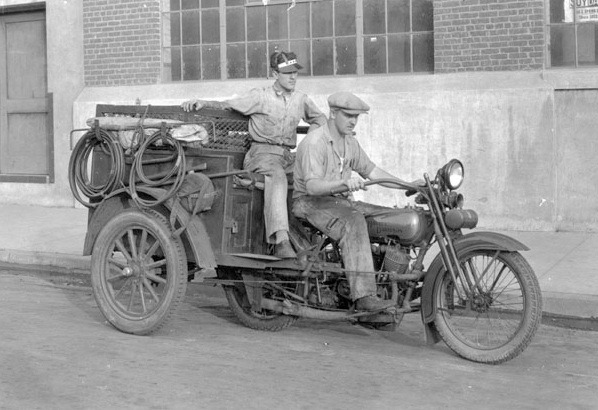Harleys at Work: Power Crew Transport

Back in the 1920’s, the Los Angeles Bureau of Power and Light used Harley-Davidson based vehicles, like the one pictured above, to transport its underground construction crews back and forth to the job site. The rider of this motorcycle was splicer Elmer Gutsch, with his helper Carly Knoobs on the back. At first glace you may mistake this for the three-wheeled Harley Servi-car, but upon closer inspection you’ll notice that the motorcycle still retains a single real wheel.
This vehicle is actually made up of two distinct parts, a 1927 Harley-Davidson JD motorcycle and a Cygnet Rear Car.
Headquartered in Buffalo, New York, the Cygnet Rear Car Company started production in the early teens. They based their designs on the original horse drawn buggy which had been a transportation mainstay for the last 100 years. Most of their models were built solely for carrying passengers, but they also made a Model G Service Type (pictured above) for the commercial market as well as gun carriages for the military.
Besides being cheaper to own than a car, the Cygnet rear car offered one significant upgrade for early motorcycles, that being an additional brake. Harley-Davidson did not put front brakes on their motorcycles until 1928, so an extra brake was welcome, especially with the added weight of the rear car. A top which extended all the way over the rider came with many of the models, but that still wasn’t enough to make many people purchase the rear car over an actual car. Like many early motorcycle companies, it is likely that Cygnet went out of business during the Great Depression and it’s niche in the motorcycle industry replaced by Harley’s Servi-Car.
Head over to the Forum to see what folks are saying about this footnote in Harley History! >>



